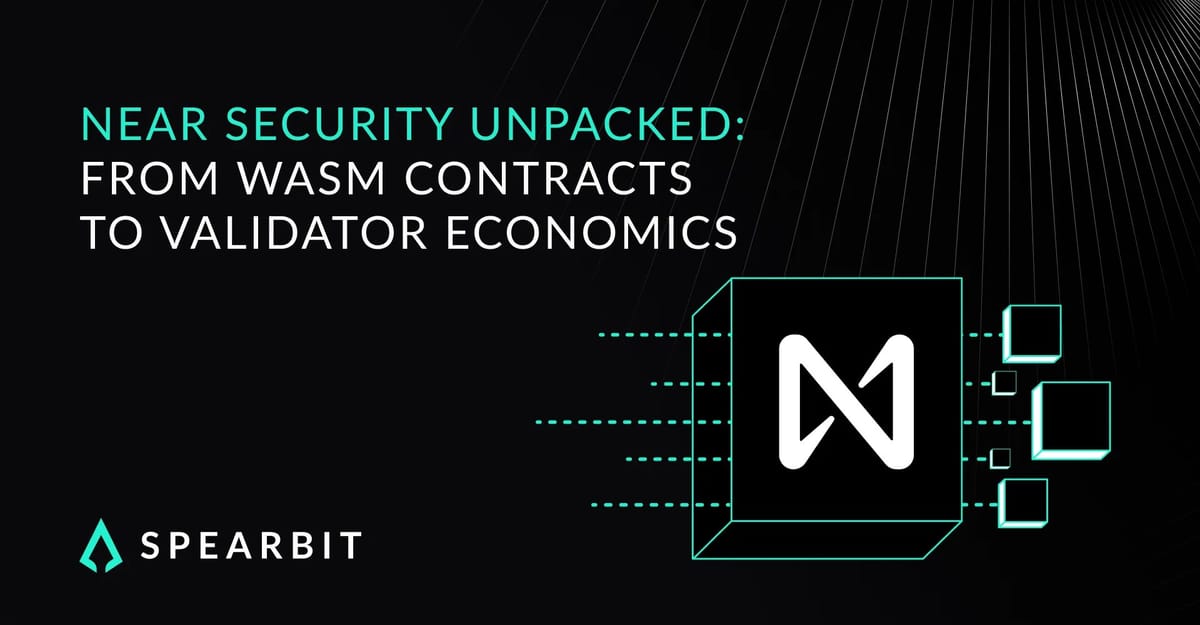NEAR Security Essentials: A Simple Guide for Builders to Build Safe & Scalable Smart Contracts

Source: cantina.xyz NEAR Security Guide
NEAR offers a high-performance, WebAssembly (WASM)-based smart contract platform designed for scalable, consumer-friendly Web3 applications. Its architecture enables parallel execution, fast finality, and development in familiar languages like Rust and TypeScript. However, these advantages come with unique security challenges that developers and infrastructure teams must carefully address.
Key Security Dimensions in NEAR
1. Runtime Architecture & Smart Contract Safety
- WASM Execution: Contracts compile to WASM, enabling speed and language flexibility but requiring explicit overflow checks in Rust to prevent silent errors.
- Asynchronous Calls: NEAR uses asynchronous cross-contract calls, demanding careful callback structuring to prevent race conditions and inconsistent state.
- Gas and Storage: Accounts prepay storage costs; incorrect gas accounting risks DoS attacks or transaction rejections.
Best practices:
- Activate Rust’s overflow checks by default.
- Validate inputs early in contract logic.
- Use NEAR SDK’s helper crates for consistent safety.
- Simulate key call flows before deployment.
2. Validator Dynamics and Consensus Risks
- NEAR operates with Thresholded Proof-of-Stake (TPoS), rotating validators every ~12 hours to ensure liveness and fast block finality.
- Validator churn and stake shifts can cause inconsistent participation or forks.
- Light clients and off-chain relayers must only process finalized blocks to reduce risk.
- Validators face downtime ejection but no slashing for equivocation or censorship – expect potential validator underperformance.
NEAR’s RPC and indexer tools help monitor validator health and detect delayed finality or missing transactions.
3. Network Layer and Node Security
In late 2024, a “Web3 Ping of Death” vulnerability exposed nodes to crashes via malformed peer-to-peer handshakes.
Recommendations:
- Disable unauthenticated debug endpoints.
- Restrict RPC access to trusted IPs or private networks.
- Monitor node uptime, memory usage, and peer count.
- Apply security patches promptly.
- Treat node interfaces as untrusted; enforce strict input validation.
4. Contract-Level Concerns
NEAR contracts lack built-in protection against reentrancy - design contracts to update state before making external calls. Other risks include:
- Callback validation failures leading to spoofed data or bad state changes.
- Gas exhaustion from unbounded loops; use pagination for large datasets.
- Unsafe randomness: rely on verified oracle or VRF services, not block hashes or timestamps.
Regularly apply fuzzing and differential testing to catch bugs early.
5. Cross-Chain Bridge Vulnerabilities
Bridges connect NEAR to Ethereum, Aurora, and other chains, but are common attack targets.
Build with:
- Strict finality assumptions on source chains.
- Honest relayer verification.
- Replay protection and payload validation.
- Emergency halt mechanisms.
Audits should cover bridge contracts and relayer logic comprehensively.
Ecosystem Status & Builder Recommendations
- NEAR’s ecosystem shows strong security maturity with ongoing public audits and bug disclosures.
- Smaller projects may have gaps-builders should:
- Publish audits and formal verifications.
- Launch bug bounty programs.
- Share reusable SDKs and testing resources openly.
How Spearbit Supports NEAR Security
Spearbit offers precision security reviews tailored for NEAR-based apps and infrastructure, including:
- Simulation and validation of smart contract runtime behaviors.
- Analyzing asynchronous callback flows.
- Infrastructure audit focusing on node/network security.
- Modeling validator behavior under attack or churn.
- Bridge security assessments in multi-chain environments.
- Upgrade and rollback readiness.
Final Takeaway
NEAR combines powerful performance and developer usability, but security demands attention across runtime behavior, consensus dynamics, cross-chain design, and node infrastructure.
Safe deployment requires holistic vigilance beyond just contract correctness. Teams should prioritize continuous monitoring, strict validation, and ecosystem collaboration to maintain robust integrity and uptime.


